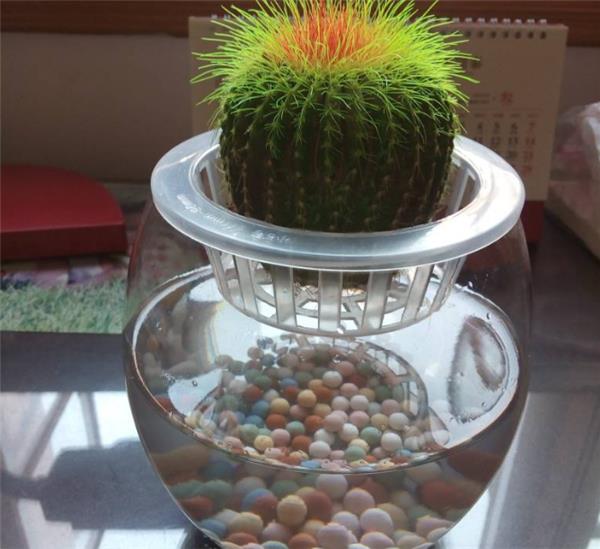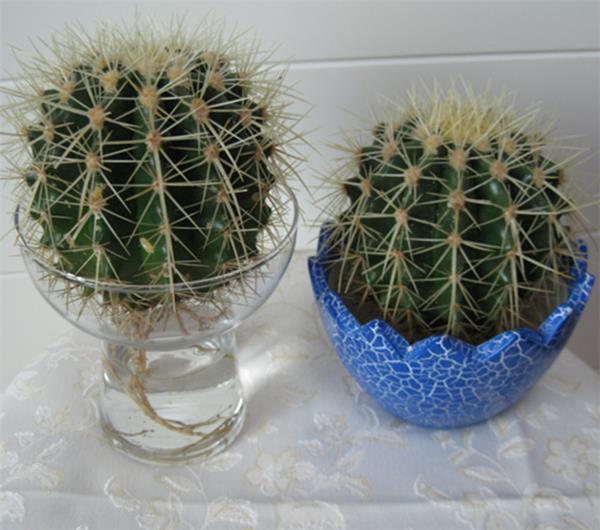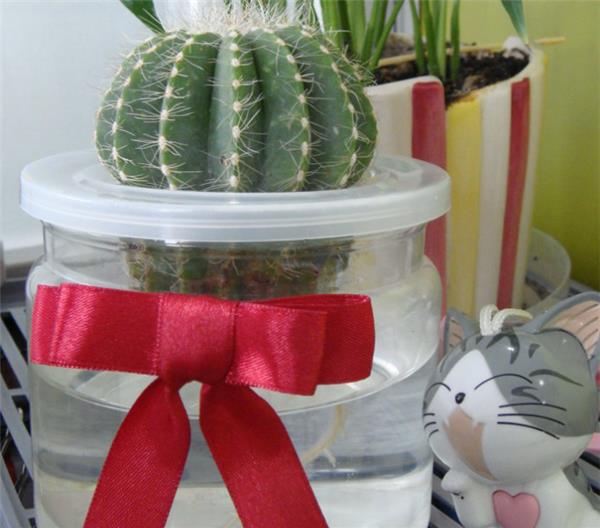How to cultivate hydroponic cactus
Potted cactus is a common method of cactus culture, but do you know that cactus can be cultured in water? let's take a look at how to raise cactus in water culture.

How to cultivate hydroponic cactus
1. Choose the female parent
First of all, we should choose the cactus with a strong sphere, and the key is to select the plant with the lower rhizome protruding downward. The cactus grafted with Mitsubishi sword is easier to be hydroponically cultured.
2. Deal with
After selecting the female parent, the original dead root under the sphere is completely cut off, and the cut mouth is required to be flat. Then rinse the soil attached to the rhizome with clean water and dry it in a dry place for 3 days to make the incision completely dry. It is necessary for cactus mutagenesis to remove native roots. Because the cactus is a succulent plant, before induction, drying for a period of time is more beneficial to root, because succulent plants have more stringent requirements for water in the seedbed, too much is easy to rot, and too little causes the effect of root.

3. Hydroponics
In terms of effect, it is the nutritional stress caused by clear water, which can accelerate the formation of root aeration tissue and the development of aquatic roots, but from the point of view of cultivation, it is better to use appropriate concentration of nutrient solution in water, which is related to the fertilizer tolerance of mutated plants.
Prepare a glass bottle of the right size, or use a mineral water bottle. Transparent utensils are easy to observe the contact surface between the liquid surface and the rhizome. Use flower mud or foam to fix the cactus with flower mud or foam at the mouth of the bottle. Add the nutrient solution below, and the height of the nutrient solution just touches the rhizome. Prepare foam jigsaw puzzle plates or white building foam boards for children's play, dig several triangular holes with sharp knives on the layout (the golden tiger can be fixed by cutting off the mouth of the waste pure water bottle and use it upside down. Note: cut off the bottle mouth so that the root of the golden tiger can be exposed from the cut bottle mouth, and then placed in a flat body with nutrient solution) insert the Mitsubishi sword into the triangle hole At this time, the roots of all Mitsubishi swords just touch the liquid surface.
Ammonia-free nutrient solution is most suitable for co-culture of fish and flowers, otherwise it will kill the fish.
When hydroponically cultured cactus, the water level should not exceed 1 / 2 of the root.

4. post-treatment of hydroponic culture.
Buy two magnets with a diameter of 6-10cm and put them into utensils in order to magnetize the nutrient solution and speed up the formation of aquatic roots. (if possible, a small suction wall submersible pump for ecological fish tank can also be purchased from the market, which can be adsorbed on the inner wall of the nutrient solution and electrified to realize the flow and oxygen circulation of the nutrient solution.
5. Key points of water training and protection.
The planted cactus is placed in an environment with strong scattered light, the temperature is kept above 20 degrees, and the water roots are usually sent out in 3-7 days. Change the nutrient solution immediately after the emergence of water rooting.

Daily nursing methods of hydroponic cactus
1. Keep the temperature of the culture environment at 5 ℃-30 ℃, which is suitable for the growth of hydroponic plants and cactus.
2. To ensure that the hydroponic cactus has enough light time, it is not necessary to be exposed to the sun, and try to avoid direct sunlight in summer.
3. Hydroponic cactus needs to change water regularly and clean its roots: change water about 7 days in summer and 15 days in winter, and add a few drops of special nutrient solution after changing water; wash off the root mucus of cactus regularly with clean water, cut off the old and rotten roots, and then clean the utensils. For each change of water, the interface of the water is suitable for the submerged root system, and the rest of the root segment is allowed to be exposed to the air.
Related
- Wuhan Hospital Iron Tree Blooming Result Was Instantly Frightened by the Gardener Master
- Which variety of camellia is the most fragrant and best? Which one do you like best?
- What is the small blue coat, the breeding methods and matters needing attention of the succulent plant
- Dormancy time and maintenance management of succulent plants during dormancy
- Minas succulent how to raise, Minas succulent plant pictures
- What are the varieties of winter succulent plants
- How to raise succulent plants in twelve rolls? let's take a look at some experience of breeding twelve rolls.
- Attention should be paid to water control for succulent plants during dormant period (winter and summer)
- Watering experience of twelve rolls of succulent plants
- Techniques for fertilizing succulent plants. An article will let you know how to fertilize succulent plants.



